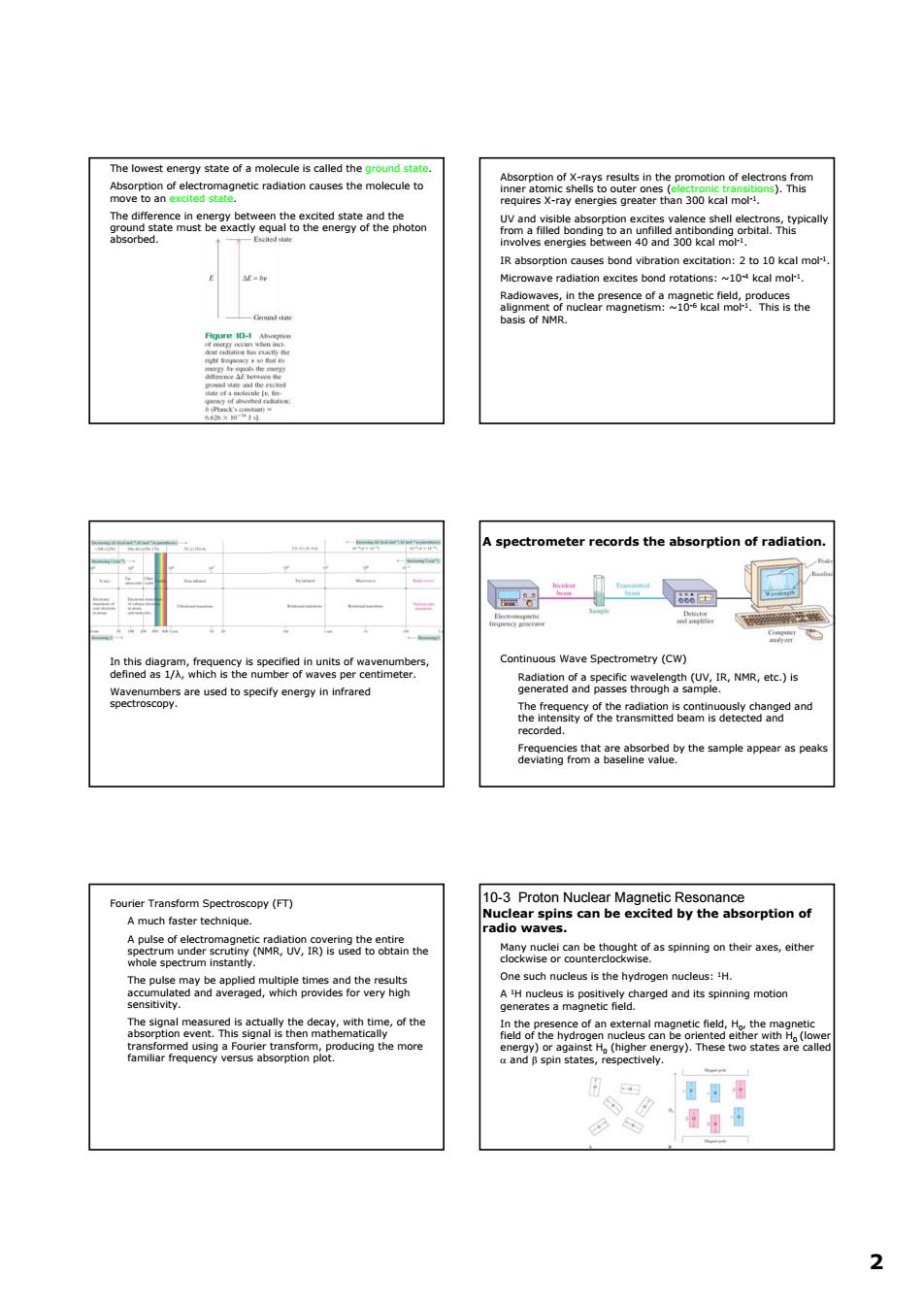正在加载图片...

2 e0a86y2n8oemewmoo a83 IR abso spectrometer records the absorption of radiat hhso00.hawx5n5pSeanaroanem9 ognR etc.)s ea5e8mwdeta8and Y 22 The lowest energy state of a molecule is called the ground state. Absorption of electromagnetic radiation causes the molecule to move to an excited state. The difference in energy between the excited state and the ground state must be exactly equal to the energy of the photon absorbed. Absorption of X-rays results in the promotion of electrons from inner atomic shells to outer ones (electronic transitions). This requires X-ray energies greater than 300 kcal mol-1. UV and visible absorption excites valence shell electrons, typically from a filled bonding to an unfilled antibonding orbital. This involves energies between 40 and 300 kcal mol-1. IR absorption causes bond vibration excitation: 2 to 10 kcal mol-1. Microwave radiation excites bond rotations: ~10-4 kcal mol-1. Radiowaves, in the presence of a magnetic field, produces alignment of nuclear magnetism: ~10-6 kcal mol-1. This is the basis of NMR. In this diagram, frequency is specified in units of wavenumbers, defined as 1/λ, which is the number of waves per centimeter. Wavenumbers are used to specify energy in infrared spectroscopy. A spectrometer records the absorption of radiation. Continuous Wave Spectrometry (CW) Radiation of a specific wavelength (UV, IR, NMR, etc.) is generated and passes through a sample. The frequency of the radiation is continuously changed and the intensity of the transmitted beam is detected and recorded. Frequencies that are absorbed by the sample appear as peaks deviating from a baseline value. Fourier Transform Spectroscopy (FT) A much faster technique. A pulse of electromagnetic radiation covering the entire spectrum under scrutiny (NMR, UV, IR) is used to obtain the whole spectrum instantly. The pulse may be applied multiple times and the results accumulated and averaged, which provides for very high sensitivity. The signal measured is actually the decay, with time, of the absorption event. This signal is then mathematically transformed using a Fourier transform, producing the more familiar frequency versus absorption plot. 10-3 Proton Nuclear Magnetic Resonance Nuclear spins can be excited by the absorption of radio waves. Many nuclei can be thought of as spinning on their axes, either clockwise or counterclockwise. One such nucleus is the hydrogen nucleus: 1H. A 1H nucleus is positively charged and its spinning motion generates a magnetic field. In the presence of an external magnetic field, H0, the magnetic field of the hydrogen nucleus can be oriented either with H0 (lower energy) or against H0 (higher energy). These two states are called α and β spin states, respectively